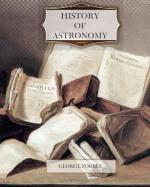|
This section contains 2,186 words (approx. 8 pages at 300 words per page) |

|
Overview
The development of photography and spectroscopy in the nineteenth century allowed astronomers to record and analyze the light coming from stars and other celestial objects. This transformed astronomy from a purely descriptive science to a systematic study of the behavior of these objects, laying the foundation of the discipline we now call astrophysics. The realization that the stars are made of elements also found on Earth, and that the Sun is actually a rather ordinary star, changed the way we look at ourselves and the Universe.
Background
Leonardo da Vinci (1452-1519) and other Renaissance scientists experimented with early cameras—optical devices for projecting an image onto a surface. However, at that time there was no way to preserve the image. In 1727 Johann Schulze (1687-1744), a...
|
This section contains 2,186 words (approx. 8 pages at 300 words per page) |

|


